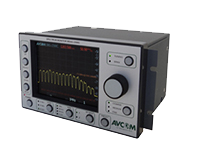In today’s digital world, a spectrum analyzer is counted as one of the prominent devices that help measure and
display signal strength at different frequencies. It looks more like an
oscilloscope. Some analyzers can even work as oscilloscopes. Due to increased
demand for this device, many companies manufacture signal or spectrum
analyzers.
This device is commonly used to display a
spectrum of signal amplitudes at different frequencies. One can know if the
signals fall within the needed range or not! It can provide spurious signals,
complex waveforms, and rare short-duration events. It’s a great device to
analyze transient signals and capturing burst transmissions. You can easily
detect the strength of signals and know if stronger signals can mask the weaker
ones.
Spectrum analyzers are widely used to analyze the frequency spectrum of modern
radio frequency signals. In addition, they are often used to know what
modifications you need to improve the performance of wireless routers such as
Wi-Fi systems.
Applications of Spectrum Analyzers-
A spectrum analyzer has many applications. Some
of them are explained below-
· With these analyzers, you can know the output
signals at frequencies other than the desired communication frequency.
· By analyzing the output signals, you can easily
determine if a wireless transmitter is working fine as per the
government-defined rules and standards for emission purity.
· The analyzers are used in radio frequency
design and testing.
· They are used in applications that need
calculating power or noise levels of signals.
· You can locate the behavior and frequency of
signals in applications at the time when they show any issue.
· Remote spectrum monitoring devices are helpful in radar systems, broadcasting devices,
voice and data communication, interference hunting, and cable TV networks.







